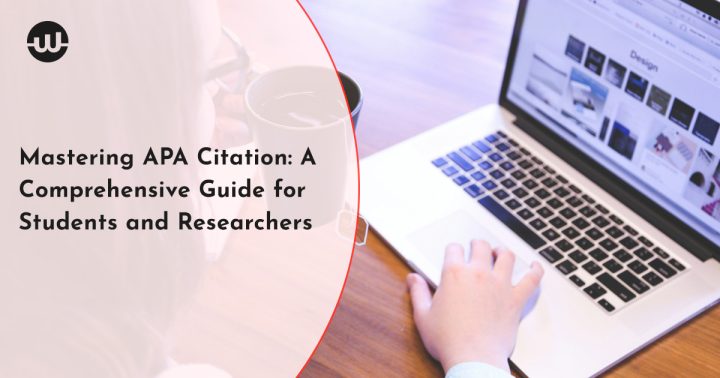Citing sources correctly is an essential part of academic and professional writing. Proper citations ensure that you give credit to original authors, avoid plagiarism, and provide readers with a way to locate referenced materials. The American Psychological Association (APA) style is one of the most widely used citation styles, particularly in the social sciences. This guide will delve into APA format, providing tips, tools, and examples for mastering your next research paper or project.
What is APA Style?
The APA style, established by the American Psychological Association, is a set of guidelines for formatting academic documents and citing sources. It provides detailed instructions on everything from title pages to reference lists and in-text citations, ensuring consistency and professionalism in scholarly writing.
Key Features of APA Style
- APA Title Page: Includes the paper’s title, author’s name, institutional affiliation, and in some cases, a course number, instructor name, and date.
- In-Text Citations: Short parenthetical references within the text to credit sources.
- Reference Page: A comprehensive list of all cited sources, formatted with precision.
- Formatting Guidelines: Standardizes elements like margins, headings, and font usage.
- 7th Edition Updates: The latest version emphasizes accessibility, including guidelines for citing digital and multimedia resources.
Tools to Simplify Citation: Aithor.com
Creating citations can be time-consuming and prone to errors. That’s where tools like Aithor.com come in. Aithor.com provides an APA citation generator that simplifies the process of creating accurate citations for your research paper. It allows users to:
- Build citations for journal articles, electronic resources, and online sources.
- Format citations in line with the 7th edition of the APA Publication Manual.
- Reduce grammar mistakes and ensure consistency across your document.
Using tools like Aithor.com not only saves time but also minimizes the risk of accidental plagiarism.
Core Components of APA Citations
1. In-Text Citations
In-text citations briefly identify the source within the text. They typically include the author’s last name and the publication date in parentheses. For example:
- Paraphrase: According to Smith (2021), effective citation practices improve academic writing.
- Direct Quote: “Proper citations are crucial” (Smith, 2021, p. 15).
Variations
- Multiple Authors: (Johnson & Lee, 2020)
- Corporate Authors: (World Health Organization, 2019)
- Electronic Resources Without Page Numbers: Use section headings or paragraph numbers, e.g., (Smith, 2021, para. 4).
2. Reference Page
The reference page is a detailed list of all sources cited in the document. Key elements include:
- Author(s)
- Year of publication
- Title of the source
- Publisher or source URL
Example of a Reference List Entry
- Journal Article: Smith, J. (2021). Understanding citation styles. Journal of Academic Writing, 10(2), 45–60. https://doi.org/10.1234/abcd1234
- Web Page: Doe, J. (2020). Citation tools for students. Retrieved January 10, 2025, from https://www.citationtools.com
Formatting Guidelines for an APA Style Paper
1. Title Page
An APA title page includes:
- Title in bold, centered, and in title case.
- Author’s name, followed by institutional affiliation.
- Date published or submission date.
- Additional details like course and instructor for student papers.
2. Headings and Subheadings
APA uses a hierarchical format for headings:
- Level 1: Centered, bold, and in title case.
- Level 2: Left-aligned, bold, and in title case.
- Level 3: Left-aligned, bold italic, and in title case.
3. Page Layout
- 1-inch margins on all sides.
- Double-spaced text throughout the document.
- A page number in the upper-right corner.
Tips for Accurate Citations
1. Avoiding Common Errors
- Quotation Marks: Use them correctly for direct quotes.
- Grammar Mistakes: Proofread for accuracy and clarity.
- Alphabetical Order: Arrange entries on the reference page alphabetically.
2. Citing Special Sources
- Personal Interviews: Include details of the interview in-text but omit from the reference list.
- Subsequent Citations: For repeated citations, you can use a shortened format after the first full citation.
3. Utilizing DOIs
A Digital Object Identifier (DOI) is a unique identifier for digital content, crucial for citing journal articles and other online sources. Example:
Frequently Asked Questions
1. Can I Use Aithor.com for Non-APA Styles?
Yes! While Aithor.com specializes in APA format, it also supports Chicago style and other citation styles, making it a versatile citation machine for diverse projects.
2. What if My Source Lacks a Publication Date?
When a retrieval date or publication date is unavailable, APA suggests using “n.d.” (no date) in its place.
3. How Do I Format Multiple Authors?
For sources with three or more authors, list the first author followed by “et al.” in in-text citations. For example:
- (Smith et al., 2021)
Why Proper Citations Matter
Using the correct citation style not only showcases your professionalism but also:
- Helps readers locate the exact words or ideas in the original source.
- Demonstrates respect for intellectual property.
- Enhances your credibility in academic and professional settings.
Neglecting to cite sources or misusing formats can lead to accidental plagiarism, which may have severe consequences for your academic or professional career.
Final Thoughts
Navigating the complexities of APA style can feel daunting, but with the right tools and guidance, it becomes manageable. Platforms like Aithor.com offer a robust APA citation builder that ensures your citations are precise and consistent, freeing you to focus on the content of your research paper. Whether you’re formatting a title page, crafting a reference list page, or tackling in-text citations, mastering APA style is a skill that will serve you throughout your academic and professional journey.
Happy citing!
